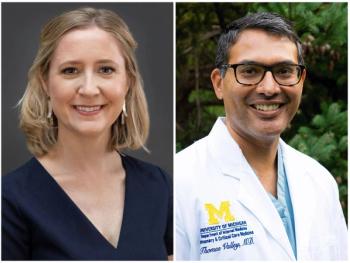
Patients less likely to return to emergency room if they get a phone call: Study
Those who received an automated call were less likely to go back to the hospital, researchers found. Those patients were also more likely to have followed up with a clinician.
Patients who received a phone call two days after discharge from an emergency department were less likely to need a return trip to the hospital, researchers have found.
Researchers from the University of California San Francisco and the University of Colorado examined results from thousands of patients at a large, urban, academically affiliated emergency department. In the
Among those who received a call, 7.6% of those patients returned to the emergency department within seven days. Meanwhile, 10.3% of patients who did not get a phone call ended up going back to the emergency department within a week.
The study also found an association with return calls and a reduced risk of a return to the emergency department within 72 hours. Only 4.6% of those who were called ended up returning to the emergency room in 3 days, while 6.2% of the patients who didn’t get a call were back in the emergency department within 72 hours.
Patients who received a call two days after discharge also indicated they were more likely to understand their health issues. They were also more likely to have received their medications and followed up with a healthcare clinician, the study found.
“This study suggests that there is measurable value to automated ED callback programs with a clinician contact option,” the authors wrote.
The researchers pointed out that follow-up phone calls represent one strategy to reduce emergency department admissions, thus improving patient care and reducing costs for hospitals.
“Return visits to the ED are a strain on health systems—with substantially increased costs, patient volumes, treatment delays, and mortality,” the authors wrote. “Reductions in ED revisits represent an opportunity to improve care and have been used as a quality metric for some time.”
Roughly four in 10 patients in the study (40.9%) were Hispanic, while more than one in five were Black (22.1%).
Calls to patients were conducted in English, Spanish, and Cantonese, but the preferred language among most patients (74.9%) was English. The study noted a sizable portion of patients (13%) were either homeless or in “marginal housing.”
Patients who received the calls were given questions with prompts to respond. Patients were asked if they had questions about discharge instructions or follow-up plans for treatment. They were also asked if they had questions about medications that were prescribed or recommended in the emergency department. Then they were asked if they had a different type of question.
Patients responded by using the touch-tone buttons on their phones. Patients didn’t need smartphones to respond to the questions.
Patients who received a two-day call also fared better in some other measures, though the researchers said the gaps weren’t statistically significant.
Those who were called were more likely to have received their medications compared to those who didn’t get a call (87% to 83.6%). The patients who got an automated call were also more likely to understand their health conditions (77.5% to 74.9%) and were more likely to follow up with a clinician than those who did not (67.9% to 66.3%).
The researchers noted that a little over 30% of patients were reached by phone two days after discharge, and 21% were reached again at 14 days.
“Patients with significant social needs, especially those without a reliable telephone or housing, have been shown to use the ED more often and may be missed by this intervention,” the authors wrote.
Scott Fruhan, an emergency medicine physician at the University of California San Francisco and Corey B. Bills, a doctor at the University of Colorado School of Medicine, wrote the study.
Newsletter
Get the latest industry news, event updates, and more from Managed healthcare Executive.






















































